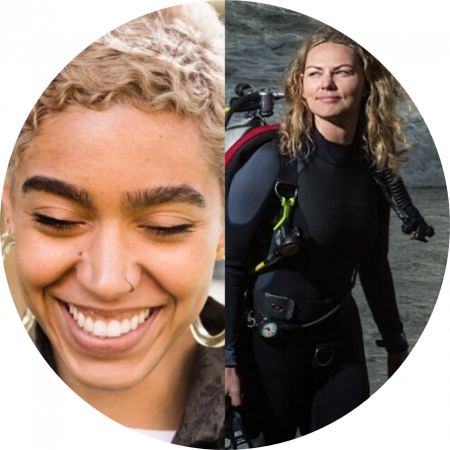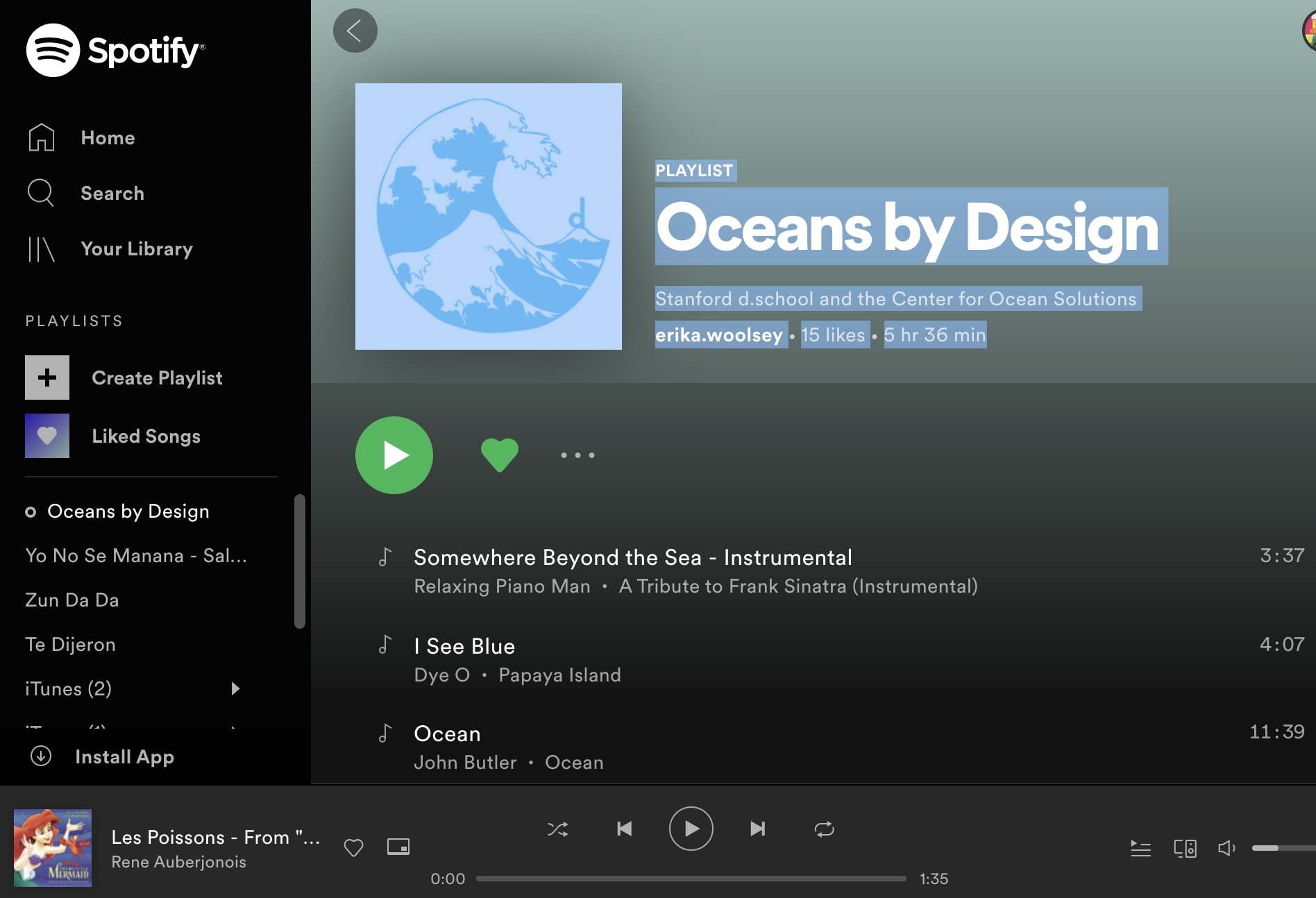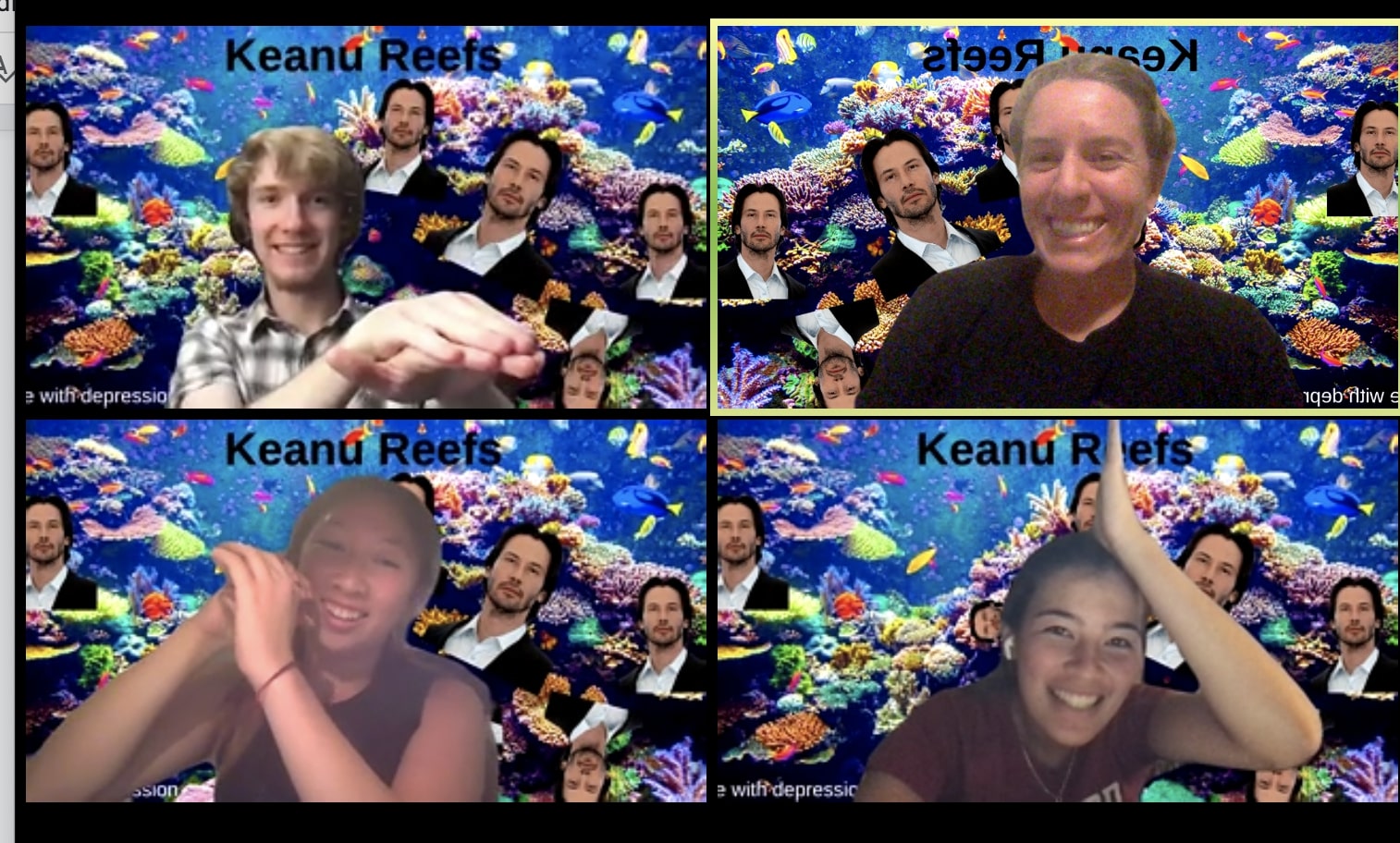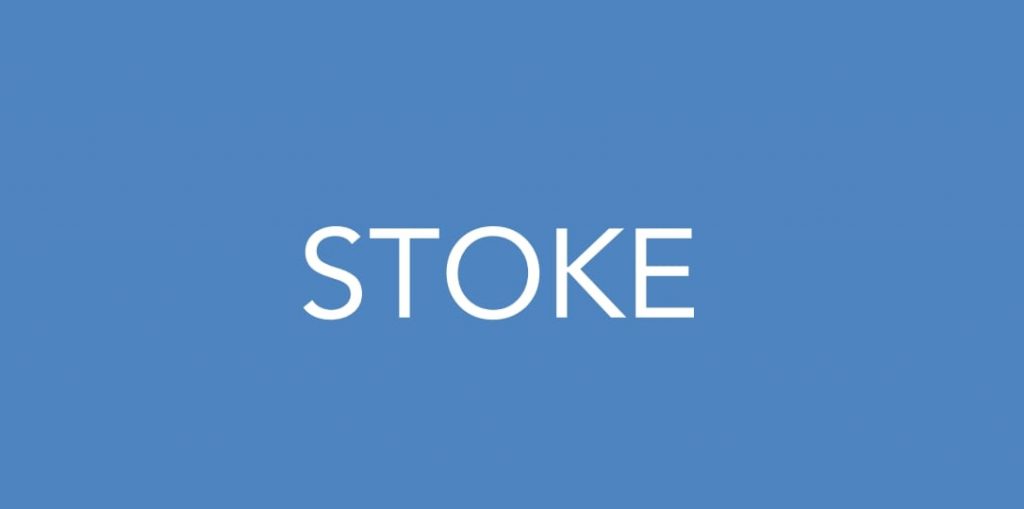Nadia Gathers and Erika Woolsey are lecturers at the Stanford d.school where they teach the Oceans by Design class. Aside from being lecturers, Gathers is a designer and technologist and Woolsey is a coral reef ecologist and National Geographic Explorer.
Key points
- Identify the guiding principles for you and your coursework
- Co-design with students on reflections, feedback, and accessibility surveys
- Provide structure by mapping design thinking skills to the purpose of the course
- Build community through an ongoing sequence of activities
- Identify the goals of your course and find tools to match
What are the d.school’s teaching tenets?
Quick takeaways: ground your planning in your values
- Identify the guiding principles for you and your coursework
- Oceans by Design principles: Accessibility. Inclusion. Joy. Confidence. Practice.
Nadia Gathers: The way that the d.school teaches is so specific to in-person learning. The way that we teach people how to facilitate really hinges on us being co-located in a lot of ways, and there’s not really a conversation about what it means to teach when you’re not in the same place, when you don’t have the same resources, when you aren’t in the same time zones. But the one thing that the d.school is incredibly good at is learning on the fly and experimenting and doing like wacky delightful and moving experiences in whatever way shape or form we have access to.
Erika Woolsey: Something that’s also very central is our dedication to accessibility and inclusion and understanding the needs of our students. I have admired what the d.school has done from the beginning – I mean they created a survey [to give us an] understanding what your situation is, what sort of internet connection you have, what you’re worried about. Creating that kind of safety to ask for what you need is really important.
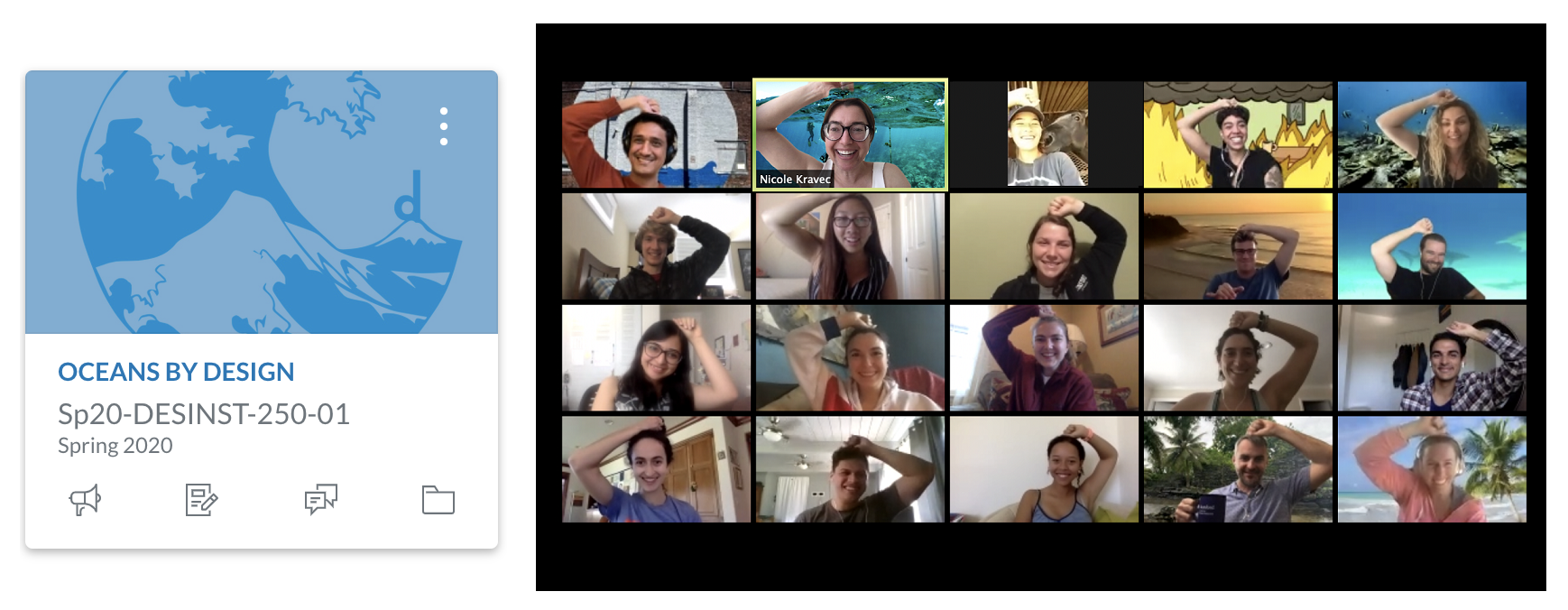
How did you design for a remote learning experience?
Quick takeaways: design for a remote learning experience instead of trying to translate an in-person class to an online platform.
- Radically reimagine what a “class” is
- Ask yourself: How will this help the students be better?
- Co-design with students (reflections, feedback, accessibility survey)
- Present research on what it means to be an effective team
- Be aware of Zoom fatigue, human interaction needs & nonverbal overload
Nadia Gathers: We decide what a class is, and we decide what a learning experience is. It’s arbitrarily based on the things that students need to graduate, or what we imagine to be the next steps in the process of learning. So, given that we essentially make these decisions and the constraints now being imposed on us, we asked could we just radically reimagine what a class even is: What is a class? What is it for? What is it? What does it create?
I asked myself, “What purpose does this class actually serve right now and how can we design the class to meet that purpose, and map the course to a design thinking process so that students come away with new skills that they can use whatever part of the universe they do their work in.”
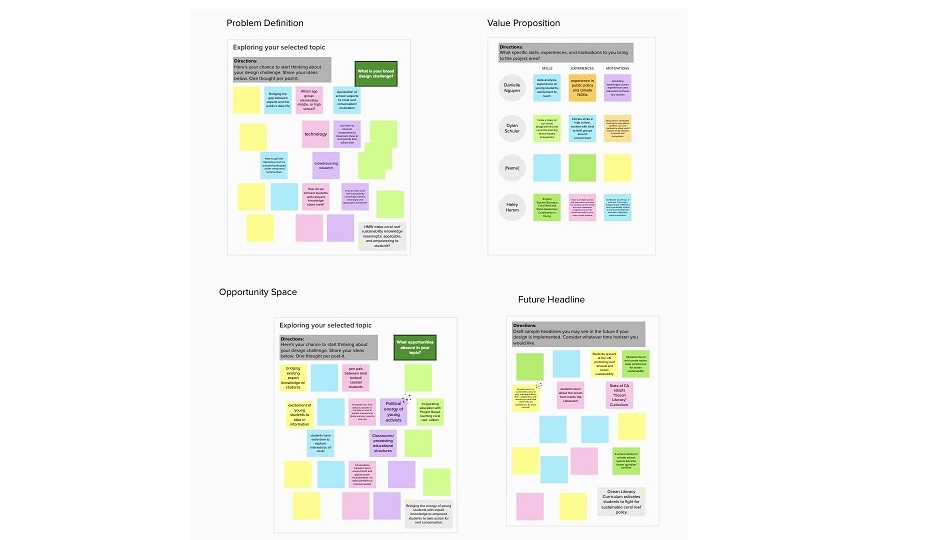
When I think about remote learning in particular in this moment that we’re in, I would challenge folks who have been teaching for a very long time – especially folks who have a more traditional set of objectives to start trying to reimagine what their class could look like and what teaching in classrooms is for.
In so many ways we are preparing our students to be not even just the next leaders, but good community members and friends and partners and parents and individuals. And when I’m teaching, I’m not so much saying “I have to get through these six things and they have to master these three movements.”
I’m saying, “How will this apply to them being better at whatever the thing that they want to be is? How can I give them the skills to actually learn better so that when they run into a wall they know how to do it in a way that is empathetic, human-centered, gracious and competent?”
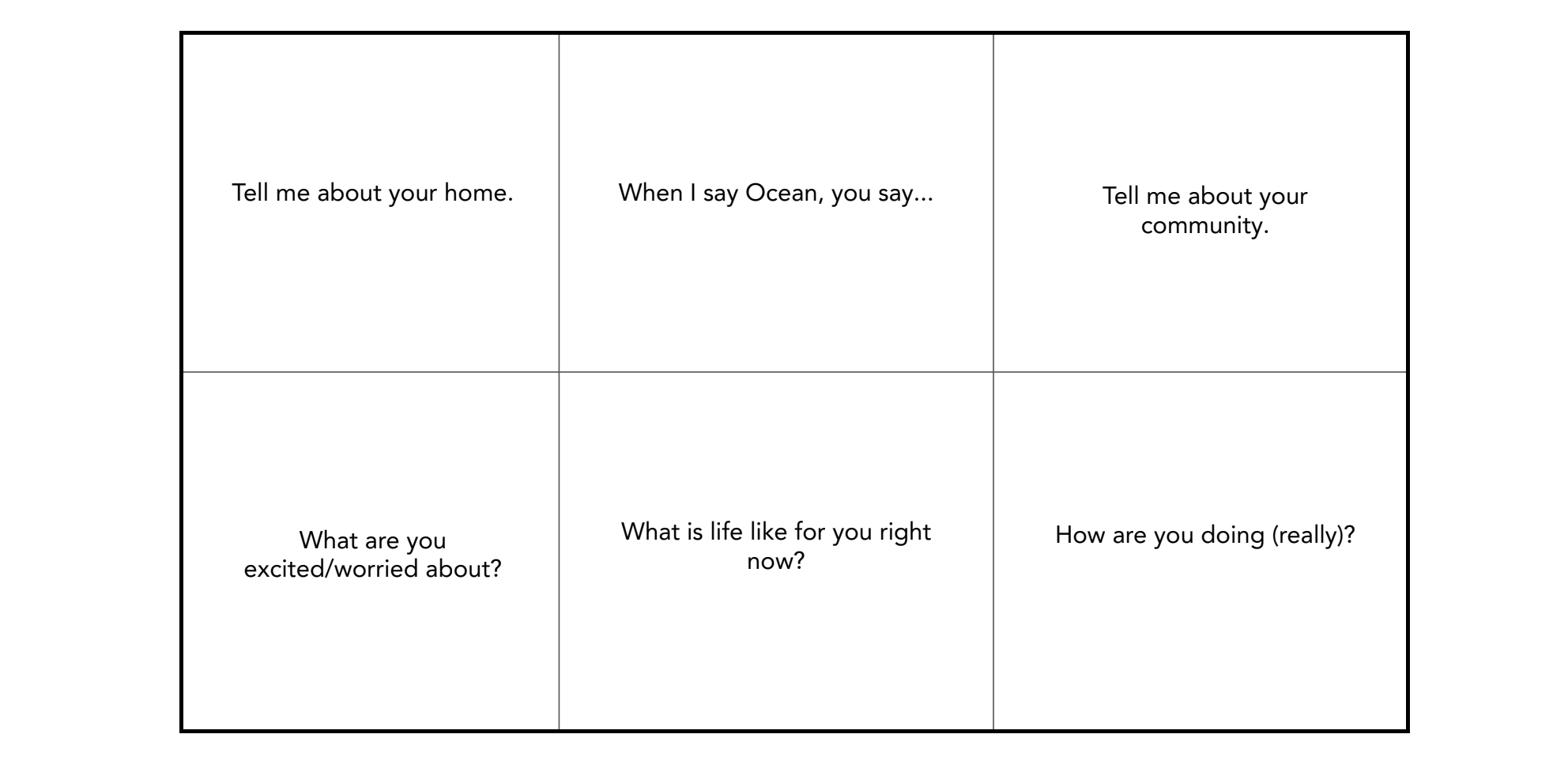
At this moment, it’s so easy to just phone it in. It’s really simple to just get on there and talk for 45 minutes lecture style to your students. But think about what they need right now and how you can design a better experience so that they come out of this thinking, “Wow, I am so resilient. I’m so competent, and people really care about me,” and they will take that into their work.
Erika Woolsey: We also make it very clear to the students that we’re co-designing this course with them. And so we have a lot of dedication to reflective practice at the end of each class as well as anonymous feedback so that we can see what’s working, see what isn’t, and change and iterate as needed and staying true to our messages and our teaching. That’s what design looks like.
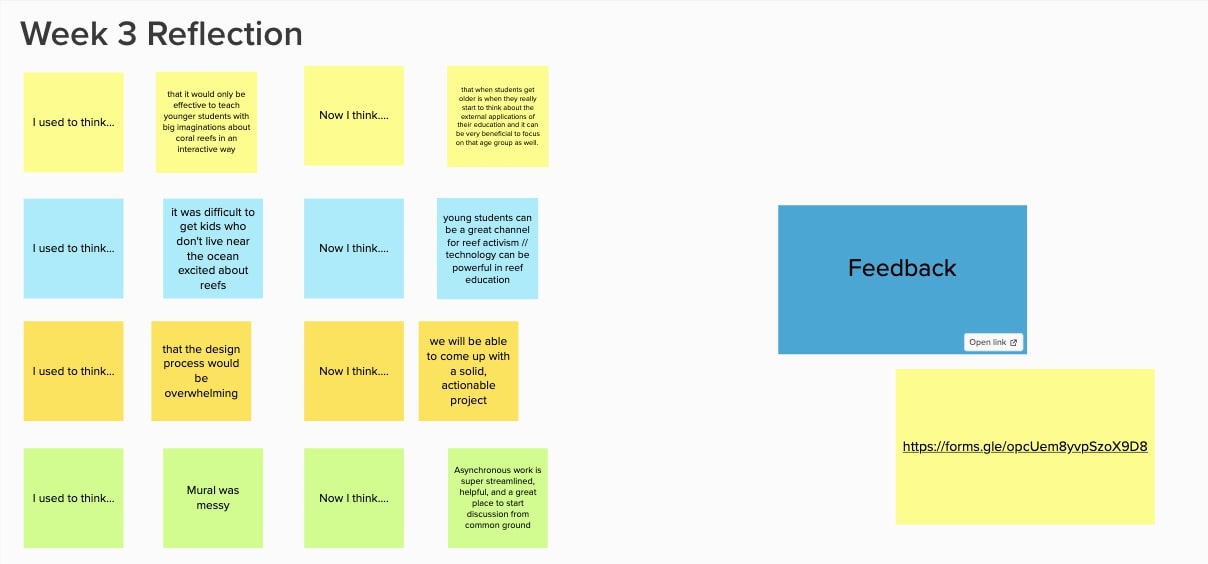

How do your core values translate into learning experiences?
Quick takeaways: identify core objectives and plan from there.
Oceans by Design objectives: Levity, Structure and Community
- Inject levity by creating moments for play and spectacle
- Provide structure by mapping design thinking skills to the purpose of the course
- Build community through an ongoing sequence of activities
- Spotify “Oceans by Design” playlist
- Introduce coworkers (family members, pets, roommates)
- Safe diver signal
- Draw & Show
- American sign language for applause
- ‘Walk’ away with one more friend each class
- Tabata breaks
Nadia Gathers: It was really just mapping. What does the class mean to our values as teachers and facilitators? Given that [my values are] so focused on community, I started to think, “how can we design for joy and design for accessibility?” I think the thing that came to mind over and over again was just to give some levity and structure and community at this moment. And that’s the thing that I continue to fall back on as we teach.
Erika Woolsey: When people came to our class, we wanted them to apply tools that design thinking can offer to work in oceans, whatever kind of discipline they’re approaching from. Infusing that sense of joy and community is incredibly powerful towards that objective.
We’ve been throwing in things to try to add that joy, despite not being able to dance together in person or board a pleasure cruise. But I mean, simple things like it’s hard to read the room when you’re just talking at your own screen, especially when everyone’s on mute. So we’ve started doing this [hand motion], which is the American Sign Language sign for applause when people are done talking. We started doing the safe divers signal that you use in scuba diving. We’re doing Tabata exercise. It seems to be really fun.
Nadia Gathers: And I make people draw random stuff and show it to me, so I can take photos. It serves literally no purpose if we’re talking about a direct correlation between the learning outcomes, but play is such an underrated mode of learning.
Erika Woolsey: Last week in class, Nadia shared what makes an effective team, and what was so valuable was that one of the biggest insights from that case study was that you don’t need to be co-located to be effective. And I think that really helps fuel that growth mindset of students, to think that “Yes they can be successful. And yes, this isn’t sort of a default second choice, having to do it online than in person. We can still accomplish everything that we’ve dreamed up accomplishing in this class.”
Nadia Gathers: If all they come away with in this class is the ability to go through a process and diagnose a problem and try to figure out the next step then I feel that I have done my job.
Erika Woolsey: And just to keep underlining how amazing Nadia is, another couple of things they’ve done is in the beginning, setting the tone where we introduce our coworkers, especially dogs. And I mean, I think we were pretty successful – in our last class, there was a horse. Like, that’s a win.
As Nadia pointed out, I loved the description of how empathy is shown as a step in a lot of design thinking frameworks, but what we have done was make it the basis of every single step.
Why did you choose the teaching tools you are using? How are they being used in class?
Quick takeaways: interactive tools are only an extension of learning goals
- Identify the goals of your course (e.g., visibility, collaboration, noodling) and find tools to match (e.g., Canvas, Zoom, Mural).
- Break outside the traditional ‘toolbox’ through intentional course structuring, virtual ocean backgrounds, breakout rooms, chat, sticky notes.
Erika Woolsey: Central to anything that we do needs to be pedagogy and dedication to learning. So we decided to start with the objectives for each class and then make that very central. We also started with the notion of making sure that everything is interactive and engaging and joyful.
Everything else outside of that is a tool. And those tools are wonderful, but they’re not an end to themselves, and tools are not going to be effective if there isn’t a central objective. I think that quite often these tools that I’m seeing for remote working seem to be used for the sake of using them, and while there is such an importance of testing and iteration and seeing what works and what doesn’t, I think it’s always important to ask, why are we doing this? Does this fit our central objective for this class? Does this spark joy? To quote Marie Kondo.


Nadia Gathers: I know, for example, I can definitely get into the habit of just putting on a Zoom meeting and doing another thing if I’m not the person who’s being spoken to, or it’s not integral that I’m there. So, we wanted a thing that made people feel like they were contributing, even if they weren’t speaking, and we asked what are the objectives and what are the tools we need to make that happen.
- We need a place where people can collaborate.
- We would like for it to be visible to all people.
- We would like for it to be interactive, so we’re not just talking at you all day, or just asking you to write on your own post-it notes at home.
- We would like an easy technical solution to share content and to have breakout rooms happen and give you a space to noodle.
Mural was a really natural comparison because we use so many sticky notes and whiteboard exercises at the d.school anyway, so we know how to facilitate that. What I really like about it is that it gets people moving in a digital space in a way that they might move in a real one. It’s not people just talking to each other. There’s this element of having to be in it because you do have to put something on the page.
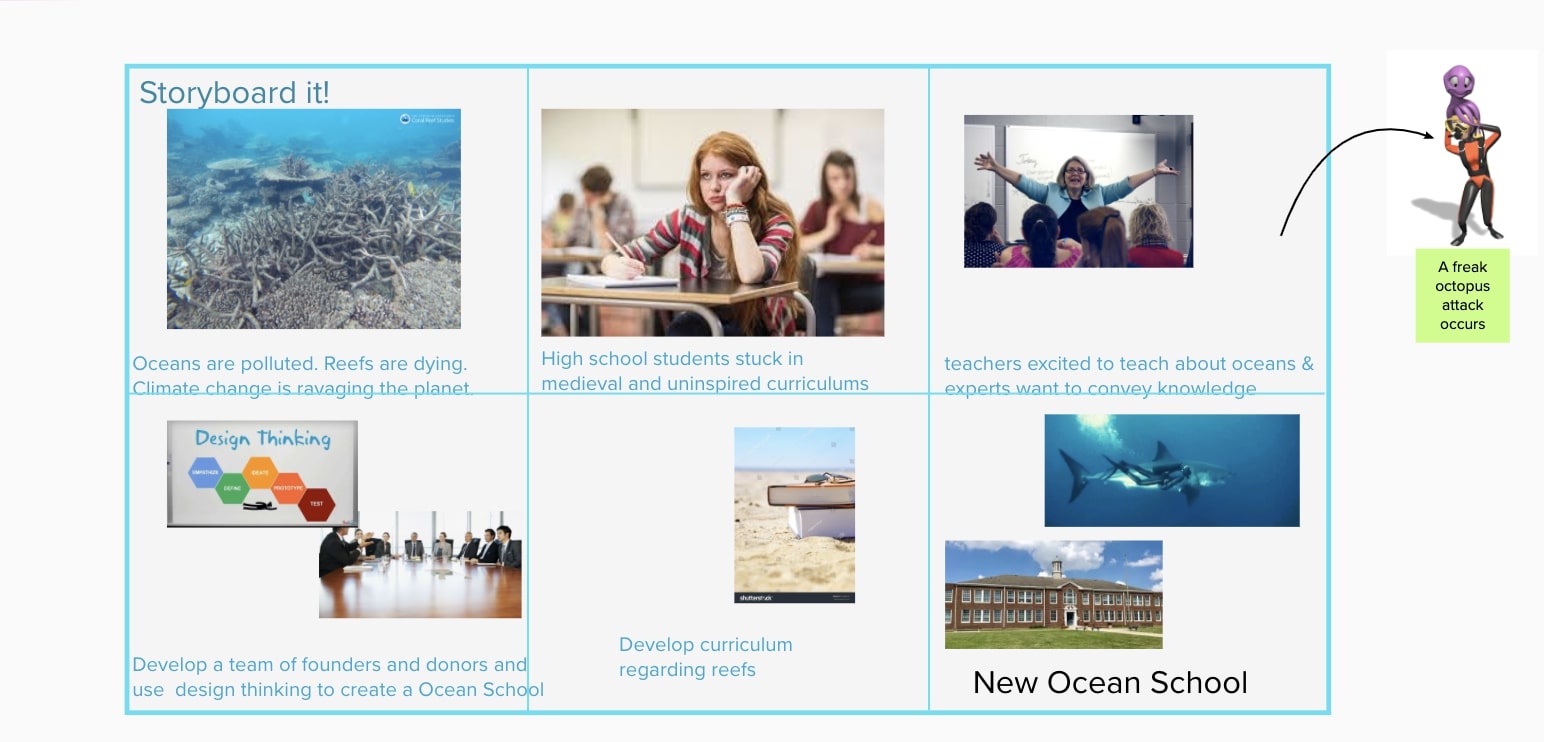
Any final thoughts?
Quick takeaway: teaching is an act of service.
Nadia Gathers: I believe teaching as a profession is one of the most fundamental acts of service and learning that you can do. I am tasked with this beautiful moment in students’ lives where they’re looking to me as a guide and an expert. It is my hope when I’m teaching that I can show them just a little bit that they’re capable and competent of parsing a lot of this and teaching them how to learn. I would challenge us to start to try to reimagine what learning could look like and what teaching in classrooms is for.
